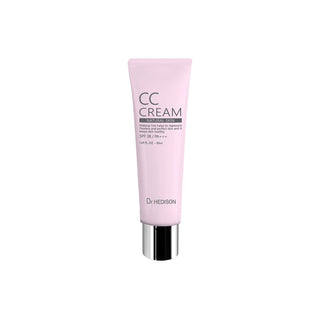What Not to Mix Peptides With in Your Skincare Routine – Common Mistakes and How to Avoid Them

Proper skincare isn’t just about choosing the right products – it’s also about how you combine them so that active ingredients work efficiently for you. Peptides have quickly become a favorite among those looking to keep their skin firm, smooth, and youthful. However, to achieve the desired results, you need to use them wisely, avoiding harmful combinations and common mistakes.
In this article, you’ll find practical details about how peptides work, which ingredients they don’t pair well with, and how to build your routine to avoid irritation or reduced product effectiveness.
What Are Peptides and How Do They Work in Skincare?
Peptides are short chains of amino acids that signal skin cells to produce more collagen or elastin [1]. Collagen and elastin are proteins that help keep the skin firm and supple. Using a serum or cream containing peptides can stimulate these natural regeneration processes.
In skincare products, you’ll find several types of peptides, such as:
- Signaling peptides: stimulate collagen production and help reduce fine lines and wrinkles;
- Carrier peptides: support the delivery of beneficial minerals into the skin;
- Neurotransmitter peptides: can relax facial muscles, which helps reduce expression lines.
Peptide creams and serums can become highly effective, especially when used in a well-structured routine.
Why Is It Important to Combine Peptides Correctly With Other Ingredients?

Even though peptides provide great benefits, they won’t perform at their best if combined with the wrong ingredients. Each active component needs a specific environment (pH, chemical stability) to work effectively.
Using peptides with exfoliating acids or retinoids without a proper strategy can lead to irritation or neutralize their positive effects. That’s why it’s useful to understand how substances in your routine interact and organize each step to protect and support your skin’s regeneration.
Steps to Properly Integrate Peptides
Below are some daily steps to help you build a balanced and effective routine:
1. Check the Ingredients in Your Routine
Read the ingredient list on each product and note if you’re using acids, retinol, benzoyl peroxide, or niacinamide. Understand how each ingredient works. You can consult a helpful guide about ingredients to avoid combining with niacinamide here to better understand the interactions in your routine.
2. Avoid Applying Peptides Together With Exfoliating Acids (AHA, BHA)
Exfoliating acids – such as glycolic, lactic (AHA), or salicylic acid (BHA) – have a low pH, which makes them incompatible with peptides. These combinations can destabilize and reduce the effectiveness of peptide-based products. For example, if you’re using a cream like AHA Scaling Cream, don’t apply a peptide serum right after. For better results:
- Apply exfoliating acids one evening and peptides on another.
- If you insist on using both the same day, wait at least 30–60 minutes between applications.
3. Don’t Combine Peptides With Retinol and Its Derivatives
Retinol stimulates skin renewal, but the retinol-peptide combo, especially when applied one after another, can cause dryness, redness, or irritation. To avoid discomfort:
- Apply retinol in the evening and peptides in the morning.
- Alternate the nights you use each product.
4. Avoid Combining With Benzoyl Peroxide
Benzoyl peroxide, often used in acne treatments, can reduce peptide effectiveness and increase skin dryness. If you need both in your routine, use them at different times or on alternate days, giving your skin time to recover between applications.
5. Don’t Use Harsh Scrubs and Exfoliants Together With Peptides
Physical scrubs or masks with strong exfoliating action can make the skin more sensitive and prone to irritation if combined with peptide-rich products. Use exfoliants and peptides on different days to protect the skin’s natural barrier.
6. Pay Attention to Complementary Ingredients
Peptides pair well with [2]:
- Hyaluronic acid: provides deep hydration.
- Ceramides: reinforce the skin barrier.
- Niacinamide: supports regeneration but should be applied separately from exfoliating acids.
- Gentle antioxidants, like stabilized vitamin C (e.g., Vitamin C Boosting Serum Dr. Althea), if the product formulations and pH levels allow it.
Always apply peptide products after cleansing and toner, but before moisturizer, on slightly damp skin to maximize absorption.
Practical Tips for Safe Peptide Use
- Start by applying on a small area to observe possible reactions.
- Make sure peptide products don’t interact with other strong ingredients, especially if you have sensitive skin.
- Don’t rely solely on peptides – support your routine with proper hydration and a varied diet rich in amino acids.
- Always use sunscreen during the day, especially if your routine includes retinol [3] or AHA/BHA acids [4].
- If your skin becomes irritated, red, or starts peeling, reduce product use and consult a doctor or pharmacist. Don’t try to self-diagnose your skin condition.
Peptides can have a positive impact on your skin’s appearance if you use them correctly and avoid incompatible ingredients. Choose products suited for your skin type and adapt your routine based on your skin’s reactions. Be patient and allow each formula time to work.
Want to find the right products for you and use active ingredients correctly? Explore top skincare brands on SkinSeen.ro and apply the tips from this guide for a safe and effective routine!
Disclaimer: This article is for informational purposes only and does not replace professional medical advice. For accurate, personalized recommendations, consult a dermatologist.
Sources:
1. January 04, and 2022. “What Are Peptides? Here’s What to Know about This Anti-Aging Skincare Ingredient.” Health.com, www.health.com/beauty/skincare/what-are-peptides (accessed on 25.09.2025);
2. Hanin Hamie, et al. “A Review of the Efficacy of Popular Eye Cream Ingredients.” International Journal of Women’s Dermatology, vol. 10, no. 2, 1 June 2024, pp. e156–e156, https://doi.org/10.1097/jw9.0000000000000156 (accessed on 25.09.2025);
3. Sharkey, Lauren. “What Is Retinol? 6 Things to Know.” Healthline, 13 Aug. 2021, www.healthline.com/health/beauty-skin-care/what-is-retinol (accessed on 25.09.2025);
4. Caporuscio, Jessica. “AHA vs BHA: The Difference and How to Use Both.” Www.medicalnewstoday.com, 23 Apr. 2021, www.medicalnewstoday.com/articles/aha-vs-bha (accessed on 25.09.2025).



